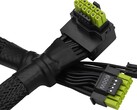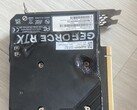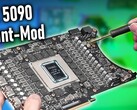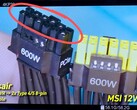The persistent problem of melting 12VHPWR connectors has resurfaced, this time affecting an RTX 4090 user who contacted overclocker and YouTuber Der8auer. While gaming, the user noticed the telltale smell of burnt plastic and discovered that the high-power connector was fused to both the graphics card and PSU ends. The card, an Inno3D model later modified with water cooling, was running undervolted and paired with a ModDIY cable using 16 AWG ultra-soft wires. Despite cautious assembly and a PSU (SilverStone Extreme 850R) deemed adequate (sic) for a 4090, the plug became immovable, pointing to a thermal failure inside the connector. Inno3D’s customer service, however, refused support, arguing the damage occurred on the cable and PSU sides—an explanation Der8auer finds technically unsound.
According to Der8auer’s analysis, the core issue lies in the lack of current monitoring across the individual 12V lines within the 12VHPWR interface. RTX 40 and 50 series cards apparently cannot detect uneven current distribution across their six power pins. This imbalance, often due to differing contact resistances among wires or pins, can lead to thermal hotspots. In this specific case, Der8auer was able to disassemble and replace the damaged GPU-side connector himself, using an H++ version of the 12VHPWR plug. Measurements revealed drastically inconsistent resistance values—one pin recorded as low as 12 milliohms, while another reached 43 milliohms, and one had no connection at all. These disparities translate directly into unequal current flow, which causes localized heating, ultimately leading to connector degradation and melting. Even under modest power draw, this can result in up to 4.6 watts of heat concentrated in a small area—enough to compromise connector integrity over time.
What makes the situation more frustrating is the fragmented response from vendors. While ModDIY showed some willingness to help—including offering to cover repair costs—Inno3D repeatedly denied responsibility, despite the card still being under warranty. Der8auer points out that only the GPU-side design can realistically mitigate these risks, as neither the cable nor PSU has visibility into load distribution. He also highlights that while high resistance can effectively "cut off" a wire, pushing more current through the remaining ones, it’s this uneven load that creates a vicious cycle of overheating. Ultimately, Der8auer calls out Nvidia’s poor power connector design and the lack of accountability across its partners. With top-end graphics cards retailing for over 2,000 euros, consumers should expect better protection—and prompt support—when failure does occur. Until Nvidia rethinks this design, users remain at risk, regardless of how carefully they assemble or undervolt their systems.
















